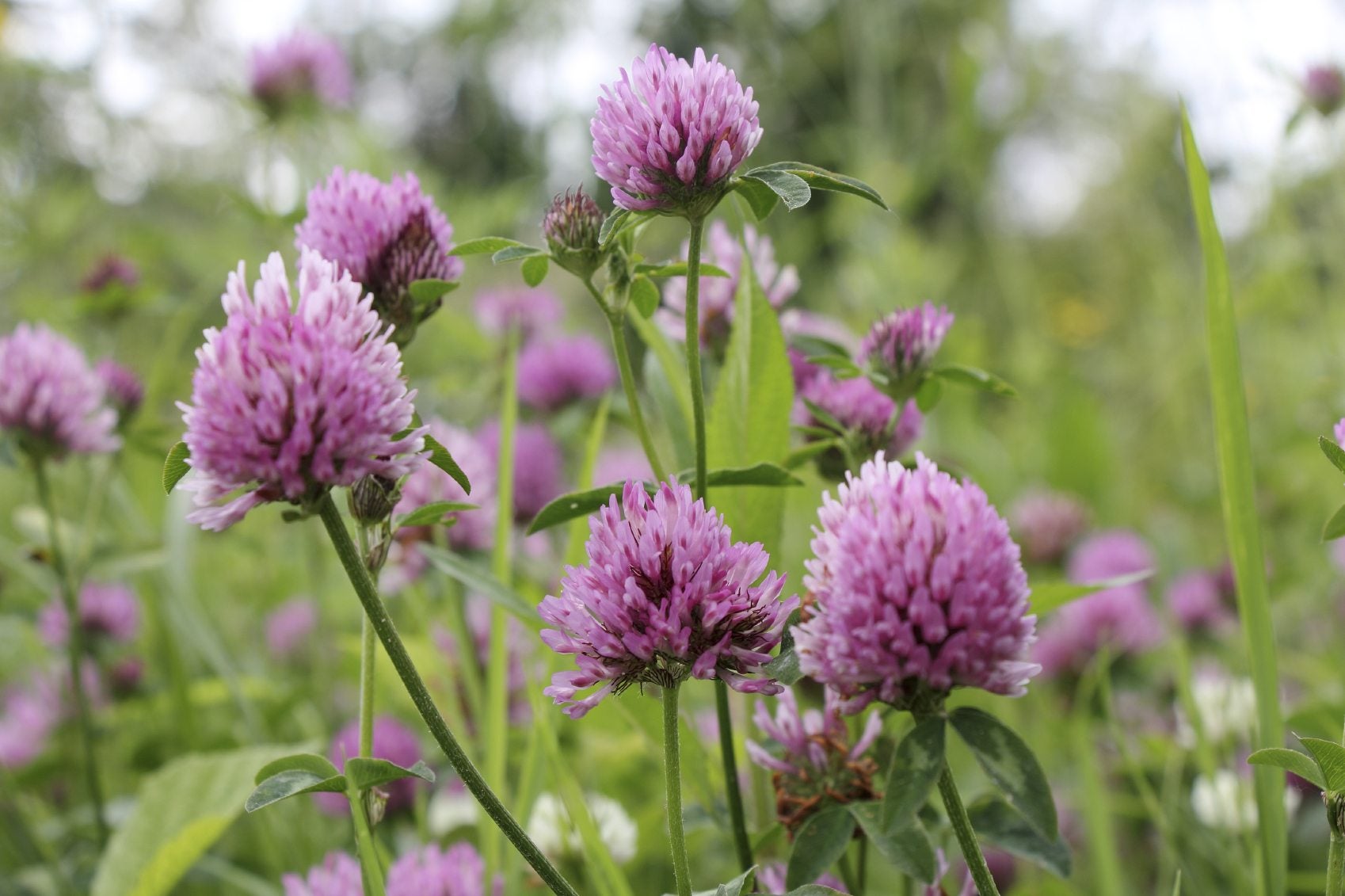Ornamental Red Clover – How To Grow Red Feather Foxtail Clover
Red feather foxtail clover amends and enriches soil by fixing nitrogen, and its showy tufted flowers are a pollinator favorite.


Red clover is a common soil amendment and green manure. The plant fixes nitrogen in soil, enhancing fertility for better growth in other plants.
If you are thinking about using red clover, why not try ornamental clover plants. Red feather foxtail clover has spectacular tufted flowers that are attractive and useful.
Red feather clover not only adds nitrogen to soil but has other benefits after providing a colorful floral display.
What is Red Feather Clover?
Growing red clover to enhance soil is a time honored tradition among organic gardeners and traditional farmers.
Trifolium rubens is an ornamental form of white clover, valued for its nutrient benefits and its lovely blooms. Ornamental red clover performs the same functions as standard red clovers while enhancing the natural landscape.
This clover provides the most arresting floral display of all the species and attracts butterflies and hummingbirds. Bees love the flowers too!
Red clover is even edible and can be used as a tea, animal browse, or sprouted for salads. If you are growing red clover for its edible or medicinal properties, make sure no chemicals are used in the area.
Gardening tips, videos, info and more delivered right to your inbox!
Sign up for the Gardening Know How newsletter today and receive a free copy of our e-book "How to Grow Delicious Tomatoes".
Other benefits of growing red clover include its ability to break up soil and prevent erosion.
How to Grow Ornamental Clover Plants
Red feather foxtail clover is easy to grow from seed and needs little care or maintenance. The plant grows 15 inches (38 cm.) tall and has fuzzy purple to red flowers from early to late summer.
It is an herbaceous perennial with characteristic clover leaves and a spreading stolen system that allows the plant to clamber over and cover large spaces.
Clover thrives in moist or dry conditions but drainage should be good. Slightly acidic soils with a pH between 6.0 and 6.5 are preferred. You can plant the clover in full sun or partial shade, although full sun provides the best yields.
Sow the tiny seeds in a well-prepared bed from January to April or August to November. Plant seeds at ¼ inch (6 mm) deep, or even scatter them on the surface of the soil and lightly dust them with earth.
Keep them moderately moist until germination, which is generally 14 to 21 days.
You may also choose to start plants indoors in flats. Transplant them to the outside when there are six true leaves and the soil has warmed. Water established plants regularly.
Choose your site carefully, as red clover has a tendency to spread and become invasive.
Red Clover Care
You may choose to cut back seed heads to prevent over-sowing of seeds and invasion of other beds. Otherwise, you can opt to till late summer planted clover in spring to increase soil fertility.
Plants sown in late winter to early summer may be allowed to persist as a groundcover and cover crop to combat weeds and enhance soil properties.
If you want to harvest the plant for consumption, take fresh flowers and leaves at any time. Ornamental red clover can be harvested up to three times in the season. You can dry them or use them fresh.
Sprouted clover seeds add a unique texture and flavor to salads and sandwiches. Soak seeds in warm water for six hours and then put them in a shallow bowl or seed sprouter. Place the container in a dark location for three days, rinsing and draining the seed twice per day. By the fourth day, you should see sprouts, which means it's time to move them to a light location to develop green color and maximum nutrients. Use them as you would any sprout.

Bonnie Grant is a professional landscaper with a Certification in Urban Gardening. She has been gardening and writing for 15 years. A former professional chef, she has a passion for edible landscaping.
-
 Looking For Plants To Give You The Soft And Fuzzies? Try These 5 Fuzzy Leaf Plant Options
Looking For Plants To Give You The Soft And Fuzzies? Try These 5 Fuzzy Leaf Plant OptionsLovers of texture, drama, silver foliage and tactile plants will adore these special sensory garden additions. These fuzzy leaf plant options will leave you all aglow
By Susan Albert
-
 Get Ready For A Summer Of Hummers! Grow These Full Sun Hummingbird Plants and Flowers
Get Ready For A Summer Of Hummers! Grow These Full Sun Hummingbird Plants and FlowersIf you’re lucky enough to enjoy a sunny backyard, make sure you are maxing out on your pollinator opportunities and grow these full sun hummingbird plants and flowers
By Tonya Barnett